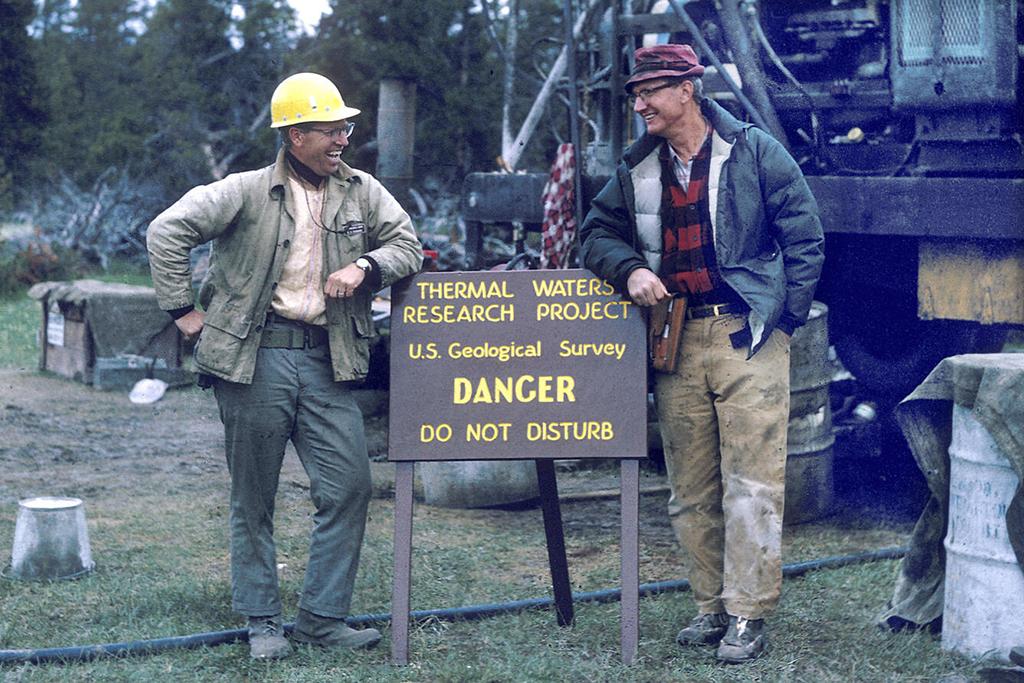
Plots showing the number of water samples collected over time (top) and by location (bottom) in the Yellowstone region since the late 1800s / USGS
Editor's Note: Yellowstone Caldera Chronicles is a weekly column written by scientists and collaborators of the Yellowstone Volcano Observatory. This week's contribution is from Margery Price, graduate student at the University of Oregon, Blaine McCleskey, research chemist with the U.S. Geological Survey, and Kirk Nordstrom, emeritus hydrogeochemist with the U.S. Geological Survey.
Scientists have recorded water chemistry data in and around Yellowstone National Park since the late 19th century, drawn to the area by its abundant hydrothermal features, unique geologic landscape, and steadfast presence in public value and interest. Over the decades, hundreds of researchers have come and gone, leaving behind little more than footprints in the park. The data and publications these scientists produced, however, illuminate the extraordinary human history of water chemistry research in Yellowstone.
In February 2024, a USGS data release was published that compiled water chemistry samples collected in Yellowstone over the last 140 years. The dozens of reports and thousands of samples in this database showcase not only the science, but also the stories of the researchers and the broader path of Yellowstone water chemistry research throughout history.
The first known water chemistry data in Yellowstone were collected in the 1870s, shortly following the creation of the national park in 1872. Albert Charles Peale, a member of the Hayden expeditions, produced thermal water analyses that were published in 1883—more than twenty years prior to the development of the pH scale! In 1888, USGS scientists Frank Gooch and James Whitfield published Yellowstone’s first extensive suite of water chemistry. Throughout the early 20th century, occasional reports were published, including two on radioactivity of the park’s thermal waters by Herman Schlundt, Richard Moore, and Gerald Breckenridge. The most pivotal report in the earliest stages of Yellowstone water chemistry, however, was the 525-page tome published by Eugene Allen and Arthur Day in 1935—a resource known to many familiar with park history and hydrothermal activity.
Following a hiatus in water chemistry publications during the Great Depression and Second World War, a new era in Yellowstone research began. With work by USGS luminaries like Don White, Bob Fournier, Al Truesdell, Pat Muffler, Irving Friedman, and Mike Thompson, among others, the library of published water chemistry research in the park began to rapidly grow. At thermal features, lakes, rivers, and drillholes across Yellowstone, these researchers and their teams collected abundant and consistent data throughout the 1960s, 70s, and 80s. Much of this work accompanied (and accelerated) advancements in analytical techniques and technology, resulting in not only more data, but better data. Multiple reports by Mike Thompson’s group published upwards of hundreds of samples apiece. In this exciting time for the USGS, interest in the microbial life of Yellowstone also took off with the work of Thomas Brock, a researcher at Indiana University and the University of Wisconsin whose textbook on microbiology set precedents in the field and whose discovery of the bacteria Thermus aquaticus led to the development of the Polymerase Chain Reaction (PCR) tool, used most recently to test for COVID-19.

Bob Fournier (left) and Don White (right) at the Y3 drilling site in Pocket Basin adjacent to Ojo Caliente, Lower Geyser Basin, Yellowstone National Park, in 1967 / USGS Photo
By the end of the 1980s, Yellowstone’s water chemistry literature had expanded greatly, both in volume and in range. A USGS team led by Kirk Nordstrom began annual monitoring of the park’s waters in the 1990s, beginning a consistent line of data that stretches into the modern day. Another USGS team, including Lisa Morgan, Pamela Gemery-Hill, Pat Shanks, Laurie Balistrieri, and Gregory Lee detailed water chemistry in Yellowstone Lake as affected by hydrothermal inflows from lake-bottom vents. These efforts, combined with other research from the USGS and academic institutions, ensure that the huge bank of historical data is anchored to measurements from the modern day.
Now, more than 150 years since the Hayden expedition of 1871, Yellowstone’s record of water chemistry research contains data from more than 5,000 water samples. Extensive across both time and space, the literature includes samples from all around the park, with especially high concentrations of samples in Norris Geyser Basin (~2,000 samples) and Lower Geyser Basin (~700 samples).


